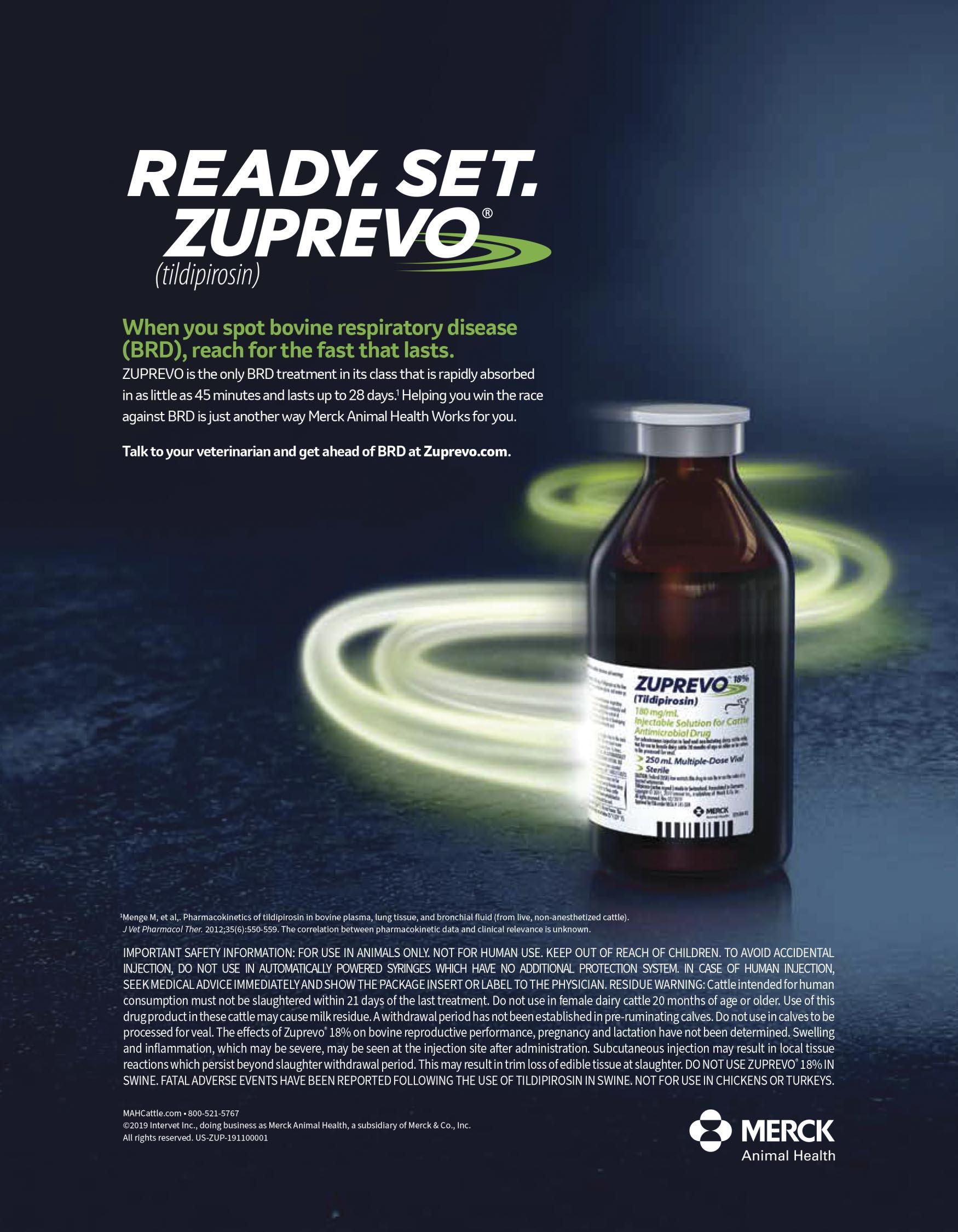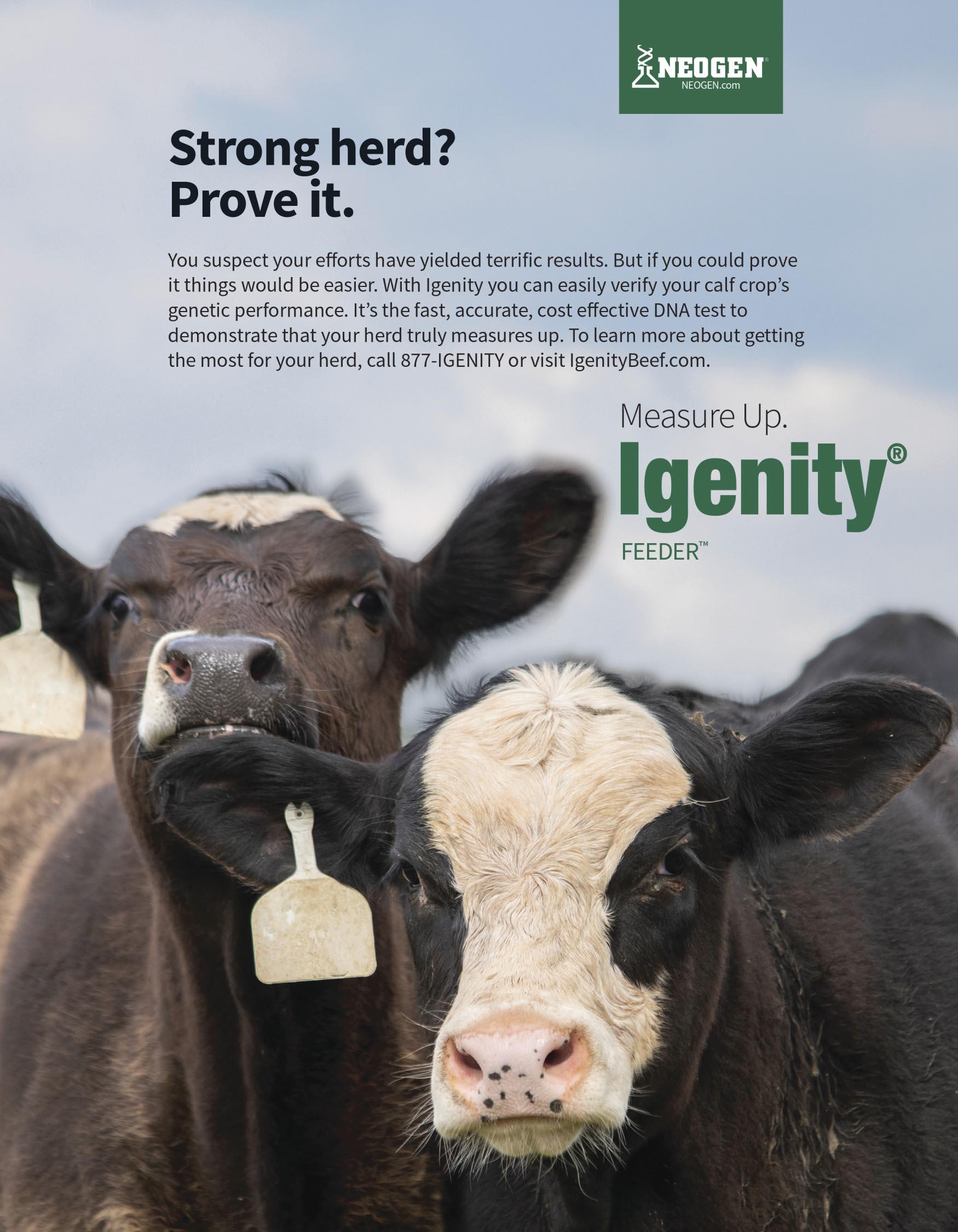
5 minute read
How Do We Keep Antibiotics Working?
By Justin Welsh, D.V.M, Executive Director, Livestock Technical Services, Merck Animal Health
Antibiotics are a critical tool for livestock producers because, like in humans, they are used to treat bacterial disease in animals. Without them, people and animals alike can suffer and even die. At a basic level, antibiotics are animal welfare and people welfare medications.
Individual animal monitoring along with better, faster, more specific diag nostic tools all will have positive implications in antibiotic stewardship.
Keeping antibiotics working is a complex topic but antimicrobial stewardship is an effort we all need to be a part of. Livestock producers, veterinarians, medical doctors, animal health companies, pet owners and human patients are all key players in this critical effort to retain the effectiveness of antibiotics. We believe the One Health collaborative approach is critical to attain optimal health for people, animals and the environment.
The fact is the list of new antibiotics for animal agriculture isn’t growing. So what do we do?
Merck Animal Health is part of a global animal health association Health for Animals that includes manufacturers of veterinary pharmaceuticals, vaccines and other animal health products throughout the world, as well as the associations that represent companies at national and regional levels. The association has put forth a “Roadmap to Reducing the Need for Antibiotics”. It revolves around investing research and energy into three priority areas: prevention, detection and treatment.
Prevention: the first line of defense
Preventing disease through vaccination is one of the best ways to reduce the need for antibiotics. In the U.S. livestock market, this means working with your veterinarian to develop a vaccination program that makes sense based on the disease pressure in your area and evaluating new vaccines as they come to market to advance health programs. In lower and middle income countries, there is a need to improve access to animal health professionals and vaccine availability.
Merck Animal Health is committed to providing leadership and innovation in bringing new vaccines to veterinarians and producers. As a result, several new vaccines, including intranasal vaccines for cattle, have been brought to market in the past year.

Biosecurity and animal welfare also play critical roles in disease prevention. We know that to successfully immunize cattle, they need to be able to respond to the vaccination.
As David Sjeklocha, D.V.M. explained in the winter issue of Protein Producers , for this to happen, two things need to take place. First, the vaccine has to be correctly cared for and administered. Second, the animal has to be in a physiological state in which it can respond to the vaccination. In that article, he shared several steps for ensuring both of those things happen at the ranch or feedlot level.
Detection and diagnosing disease
To reduce the need for antibiotics, we also must monitor animal disease and antibiotic usage. Utilizing new technology to see disease occurrence trends and geographies, monitoring and sharing resistance data and how antibiotics are used will be necessary for success. Individual animal monitoring along with better, faster, more specific diagnostic tools all will have positive implications in antibiotic stewardship.
Merck Animal Health has created a new operating unit focused on just this – using data, diagnostics and technical innovation to improve animal health. It includes well-recognized and market-leading brands of Allflex Livestock Intelligence, Sure Petcare, Biomark and Vaki, including the recent acquisitions of IdentiGen and Quantified Ag.
The goal is to provide technologies that give animal caretakers real-time, actionable data to improve or enhance animal management and health outcomes. An example of this is the Whisper® Veterinary Stethoscope that can help gauge the severity of bovine respiratory disease in 8 seconds. New diagnostic tools can help us make better antibiotic decisions.

Treating by using antibiotics judiciously, responsibly
Even if the best practices and protocols are followed, it’s important to recognize that some animals will still get sick. Thus the need for treatment will continue as well. Antibiotics are a key part of animal well-being. Through better training and diagnostics, veterinarians and animal caretakers will be able to make treatment decisions that are more individualized and focused to use the right antibiotic at the right dose, time and route.
This ultimately reduces treatment times and the amount of antibiotic used. To aid in their recovery, animals also need the fundamentals of good animal husbandry – fresh feed, clean water, dry pens and ample bedding.
Combating antimicrobial resistance
Continued efforts to improve prevention, detection and treatment of disease in both animals and humans are hallmarks of a One Health approach to antimicrobial stewardship. We must recognize this is not an issue limited to one species or location, and what we do on the ranch or farm level does matter. Retaining the use and usefulness of antibiotics will require all of us to change our view of how we approach disease.
Roadmap for Reducing the Need for Antibiotics
Health for Animals, a global animal health association, put forth a “Roadmap to Reducing the Need for Antibiotics.” The introduction, printed below, explains the concept of antimicrobial stewardship. Read the entire document at https://healthforanimals.org/roadmap/.
Antibiotics are a cornerstone of modern medicine and public health.
Their importance to human and animal health cannot be understated, which is why antimicrobial resistance (AMR) is such an urgent global threat. When bacteria develop tolerance or resistance to antibiotics, we risk returning to a time when animals – and people – fell seriously ill or even died from simple, treatable infections.
Antibiotics are the only way to treat a bacterial disease. There is no alternative.
As the producers of animal medicines and other health products, our industry equips veterinarians to deal with animal disease. Reducing antibiotic use without first tackling disease rates would mean sick animals go untreated, causing unnecessary suffering and increased risk to other animals and people.
Justin Welsh, DVM, is executive director of Livestock Technical Services for Merck Animal Health’s U.S. Livestock Team. Dr. Welsh oversees the technical services and pharmacovigilance groups for the company’s ruminants, swine and poultry businesses. He has more than 25 years of experience in veterinary medicine. Before joining the company in 2012, he was in rural private practice for 17 years, working in and owning a mixed animal veterinary practice in western Nebraska. Welsh holds a bachelor of science degree in Animal Science from the University of NebraskaLincoln and earned his doctor of veterinary medicine degree from Kansas State University. He is an active member of numerous industry associations, including the American Association of Bovine Practitioners, Academy of Veterinary Consultants and the Nebraska Veterinary Medical Association.

However, we can exploit the full spectrum of our veterinary tools to reduce the need for antibiotics. By better protecting animals from the threat of disease, identifying health issues earlier and treating them quickly and responsibly, we can bring down disease levels and with it, the need for antibiotics. This requires maximizing the long-term and preventative health benefits of vaccination, nutrition, biosecurity, disease surveillance diagnostics and other animal health technologies.
Together, these tools can improve the prevention, detection and treatment of animal disease. This is our roadmap to reducing the need for antibiotics.
The ability to manage and control animal disease has profound consequences for human health and development, from ensuring the safety of meat, milk, fish and eggs to reducing the risk to people of bacterial animalborne diseases. And while the links between antibiotics in animals and growing levels of resistance remain complex, AMR affects us all.











